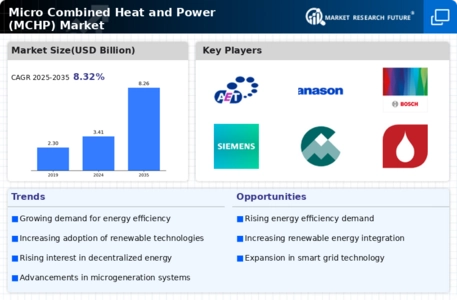Top Industry Leaders in the MCHP Market

*Disclaimer: List of key companies in no particular order
Latest Company Updates:
September 2023
Danone, a Paris-based global supplier of dairy and plant-based products, waters, and nutrition, has introduced a microgrid controller and combined heat and power facility for its Boksburg, South Africa facility to support the company's global commitment to net zero by 2050.
A range of dairy products, including Nutriday yogurt and Ultramel custard, are produced at Danone's dairy product manufacturing facility in Boksburg, South Africa. When compared to diesel or grid coal-fired power, gas-fired power generation reduces carbon emissions.
In the event of a local grid failure, business continuity can be ensured by combining the advantages of energy-efficient combined heat and power technology with renewable solar power and emergency backup generation. This will provide cleaner power and energy resilience to the operating facility.
April 2023
The world leader in carbon reduction and on-site resilient green energy solutions, Capstone Green Energy Corporation, has announced that an order for a 600kW State-of-the-Art Biogas to Combined Heat and Power Project—a biogas-fueled Capstone C600 Signature Series microturbine—has been secured by E-Finity Distributed Generation, Capstone's exclusive distributor for the Mid-Atlantic, Southeastern, and Caribbean regions. The biogas production process will experience a 40% temperature increase when the microturbine system is combined with an Alfa Laval Micro heat exchanger to raise thermal oil from 200 degrees to 280 degrees. Late in 2023 is when the order is expected to be commissioned.
The C600S microturbine's waste heat will be directed into an Alfa Laval heat exchanger, which will heat thermal oil in a novel way to create biogas while maintaining the maximum system efficiency.
Top listed global companies in the industry are:
- Honda India Power Products Ltd. (Japan)
- Vaillant Group (Germany)
- Yanmar Holdings Co. (Japan)
- Ceres Power Holdings Plc (UK)
- Qnergy (US)
- Aisin Corporation (Japan)
- BDR Thermea Group (Europe)
- Centrica Plc (Canada)
- Viessmann Group (Germany)
- Dantherm Power (Europe)
- Enginuity Power Systems (US)
- Solid Power (US), and others










